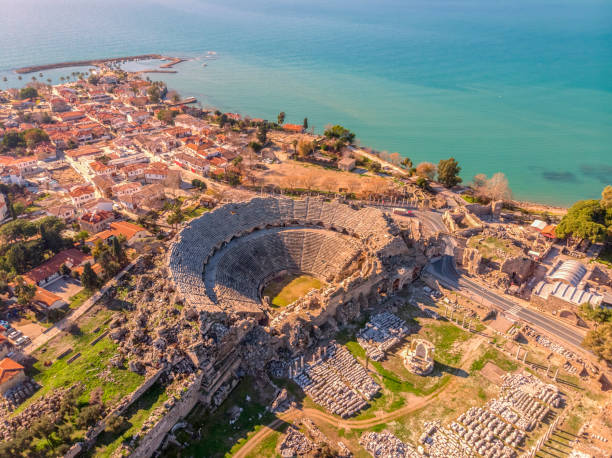
Side is an ancient Greek city on the southern Mediterranean coast of Turkey in Antalya, a resort town and one of the best-known classical sites in the country.
Browse 1,300+ temple of apollo antalya province stock photos and images available, or start a new search to explore more stock photos and images.

Side is an ancient Greek city on the southern Mediterranean coast of Turkey in Antalya, a resort town and one of the best-known classical sites in the country.
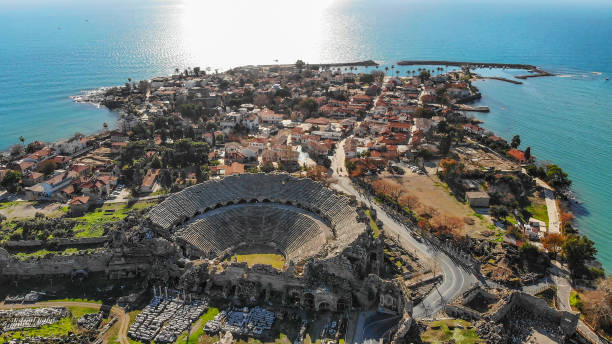
Side is an ancient Greek city on the southern Mediterranean coast of Turkey in Antalya, a resort town and one of the best-known classical sites in the country.

Ruins of the Temple of Apollo in the ancient city of Side, Side, Antalya, Turkey.

Panoramic view of ruins of ancient Temple of Apollo in Side on sunset, Alanya province, Turkey. Ruined old city. Unesco Cultural Heritage Monument. High quality photo
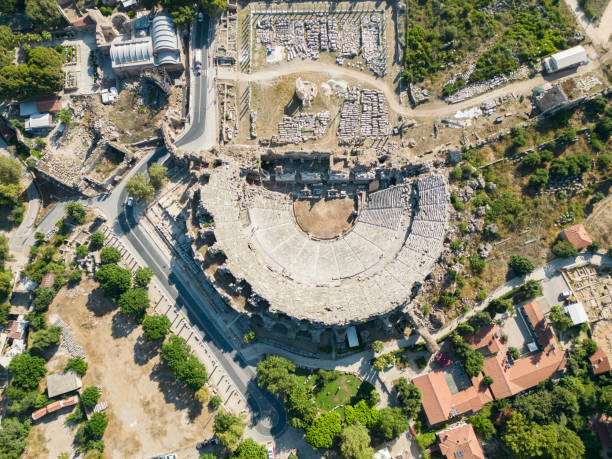
Side is an ancient Greek city on the southern Mediterranean coast of Turkey in Antalya, a resort town and one of the best-known classical sites in the country.
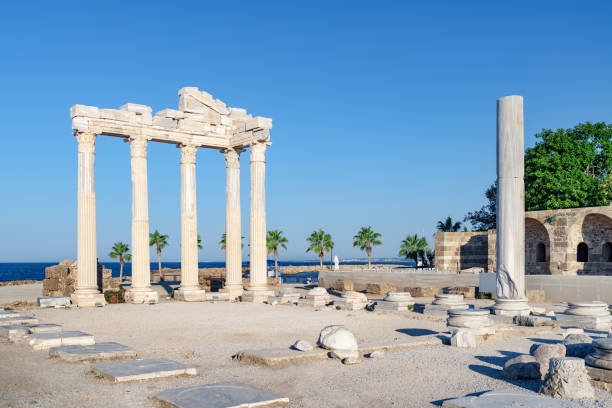
Awesome ruins of the Temple of Apollo on the Mediterranean Sea coast in Side, Turkey. The Roman temple is a popular tourist attraction in Turkey. Amazing view of columns on sunny day.
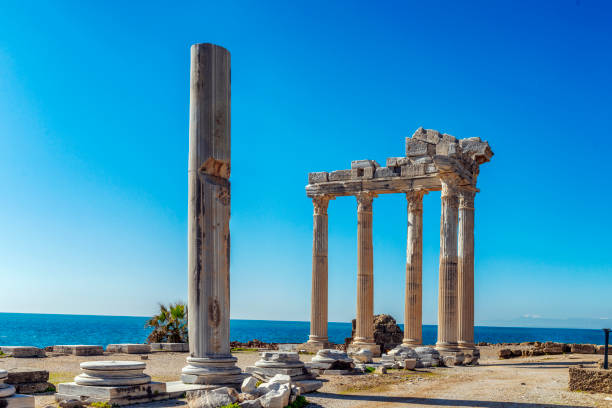
The Temple of Apollo is located at the end of Side's peninsula. Side is a city on the southern Mediterranean coast of Turkey. It includes the modern resort town and the ruins of the ancient city of Side, one of the best-known classical sites in the country.
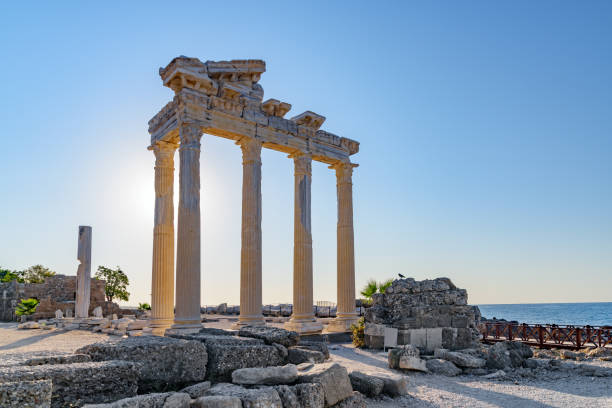
Awesome ruins of the Temple of Apollo on the Mediterranean Sea coast in Side, Turkey. The Roman temple is a popular tourist attraction in Turkey. Amazing view of columns on sunny day.

Awesome ruins of the Temple of Apollo on the Mediterranean Sea coast in Side, Turkey. The Roman temple is a popular tourist attraction in Turkey. Amazing view of columns on sunny day.

Awesome ruins of the Temple of Apollo on the Mediterranean Sea coast in Side, Turkey. The Roman temple is a popular tourist attraction in Turkey. Amazing view of columns on sunny day.

Awesome ruins of the Temple of Apollo on the Mediterranean Sea coast in Side, Turkey. The Roman temple is a popular tourist attraction in Turkey. Amazing view of columns on sunny day.
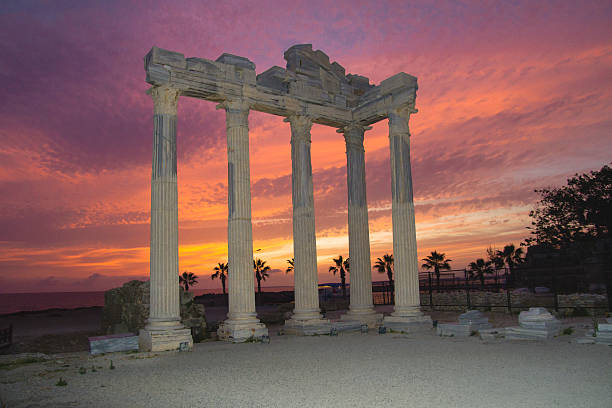
Sunset behind the Temple of Apollo. Side, Antalya / Turkey
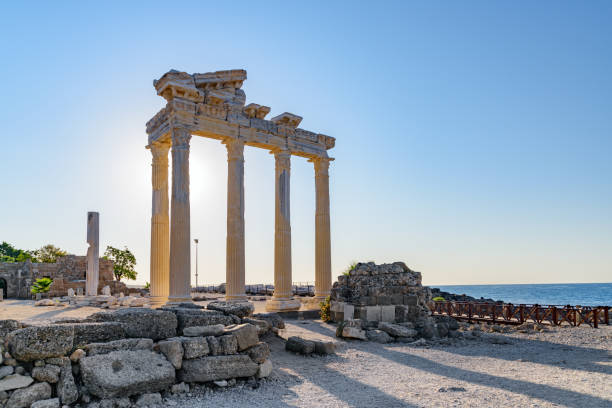
Awesome ruins of the Temple of Apollo on the Mediterranean Sea coast in Side, Turkey. The Roman temple is a popular tourist attraction in Turkey. Amazing view of columns on sunny day.
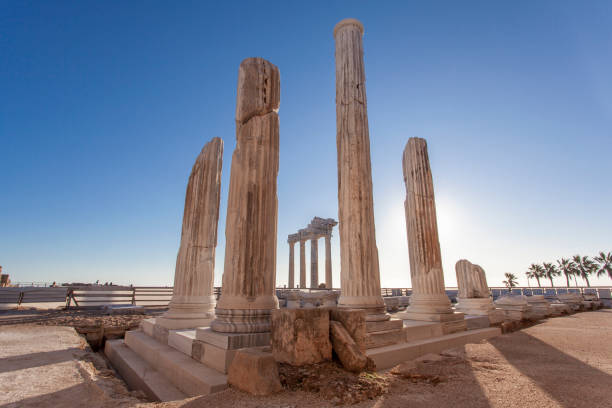
Temple of Athena ( Goddess ) rising again.

Awesome ruins of the Temple of Apollo on the Mediterranean Sea coast in Side, Turkey. The Roman temple is a popular tourist attraction in Turkey. Amazing view of columns on sunny day.
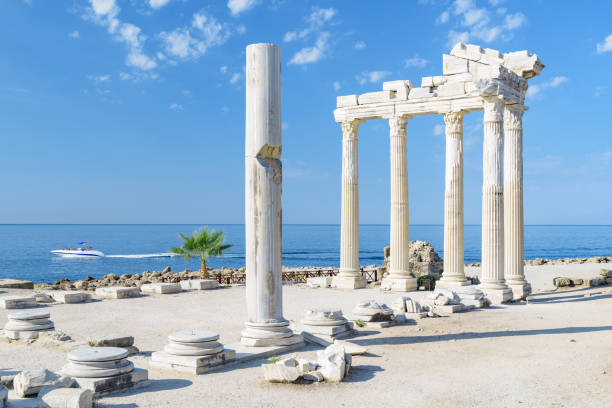
Awesome ruins of the Temple of Apollo on the Mediterranean Sea coast in Side, Turkey. The Roman temple is a popular tourist attraction in Turkey. Amazing view of columns on sunny day.

Aerial top drone view of ancient Side town with Apollon Temple, Antalya Province in Turkey.

Temple of Apollo in Turkey. Side's archaeological location combined with its historical treasures, makes it a must-visit destination for history enthusiasts

Side is an ancient Greek city on the southern Mediterranean coast of Turkey in Antalya, a resort town and one of the best-known classical sites in the country.
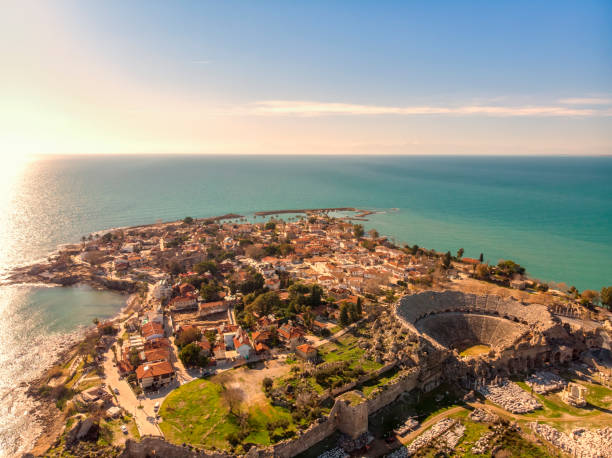
Side is an ancient Greek city on the southern Mediterranean coast of Turkey in Antalya, a resort town and one of the best-known classical sites in the country.

Temple of Apollo at sunset, Greek ancient historical antique marble columns in Side Antalya Turkey

Temple of Apollo rain after, Greek ancient historical antique marble columns in Side Antalya Turkey
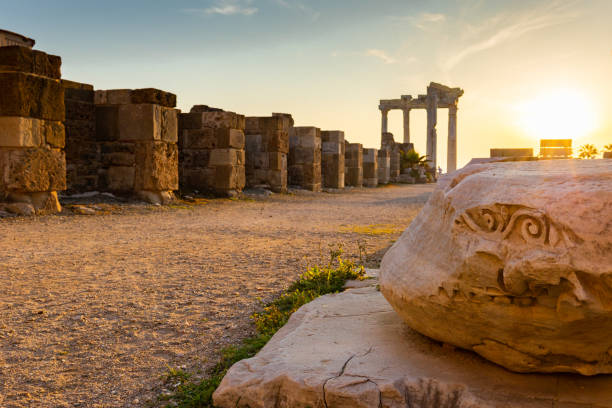
Panoramic view of ruins of ancient Temple of Apollo in Side on sunset, Alanya province, Turkey. Ruined old city. Unesco Cultural Heritage Monument. High quality photo
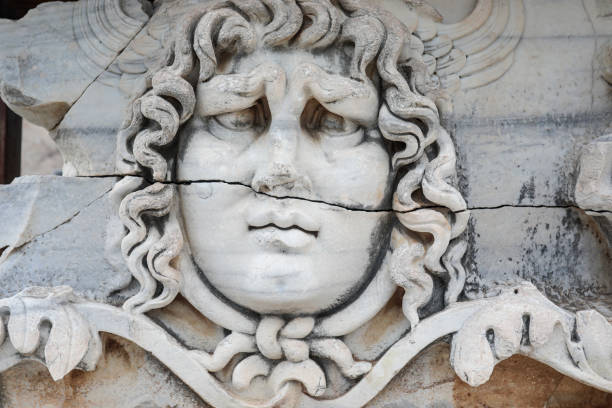
View of Temple of Apollo in antique city of Didyma, Aydin,Turkey
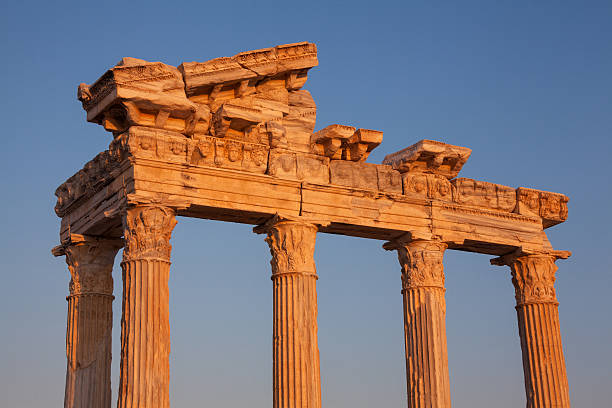
Ancient ruins of Roman Empire ( construction date about II century) at sunset. Apollo Temple, Side, Turkey. Canon 5D MkII.
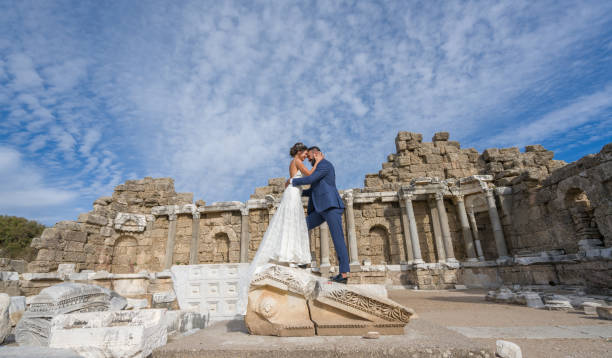
Young married couple in antique city side standing over temple of Apollo

Temple of Apollo rain after, Greek ancient historical antique marble columns in Side Antalya Turkey
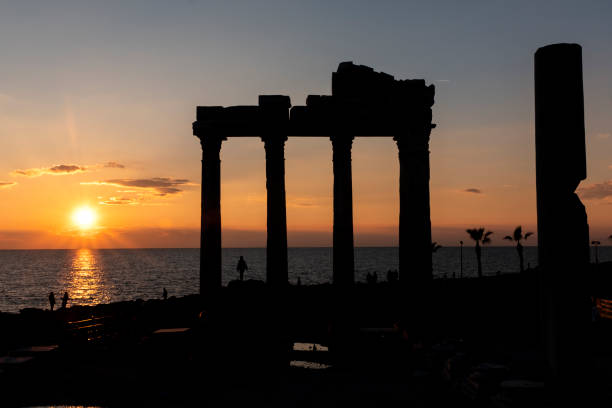
Anatolia, Antalya Province, Asia, Built Structure,Sky. , Famous Place, Monument. Near Side, Antalya. Sunset shoots in temple, Siliüet experiments. One person has posed under the clan of the temple.
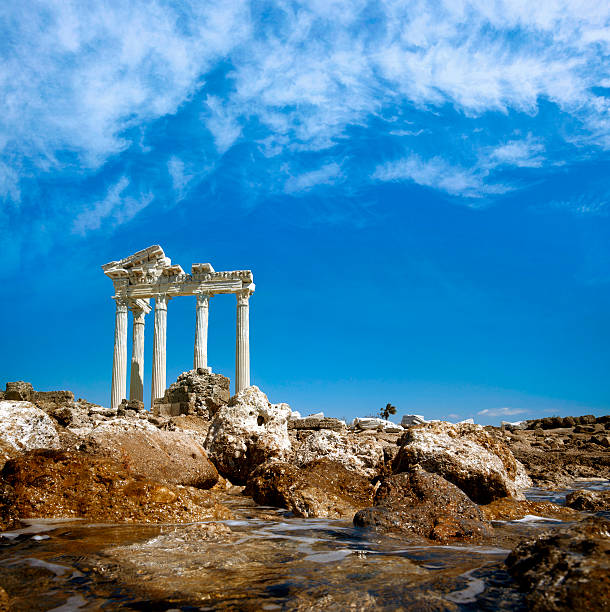
"Temple of Apollo. Side, Antalya / Turkey"
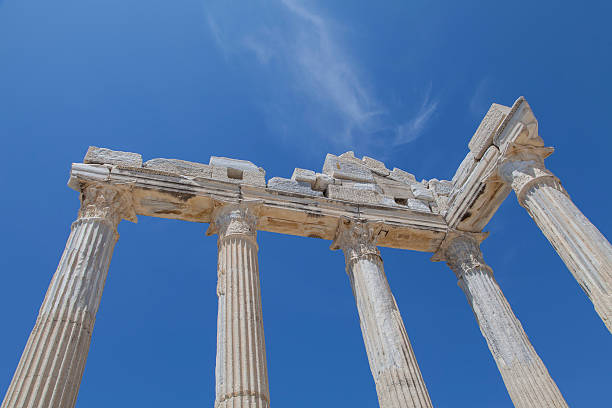
Turkey Ruins of the Temple of Apollo located in Antalya.

The Temple of Apollo is located at the end of Side's peninsula
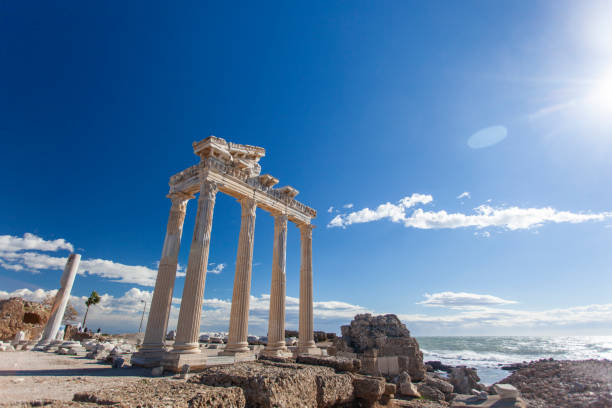
Sunny weather in winter at temple of Apollo Side Antalya

Side, Antalya, Turkey - February 15, 2025: Visitors take photos at the Temple of Apollo in Antic Side, Antalya, Turkey.
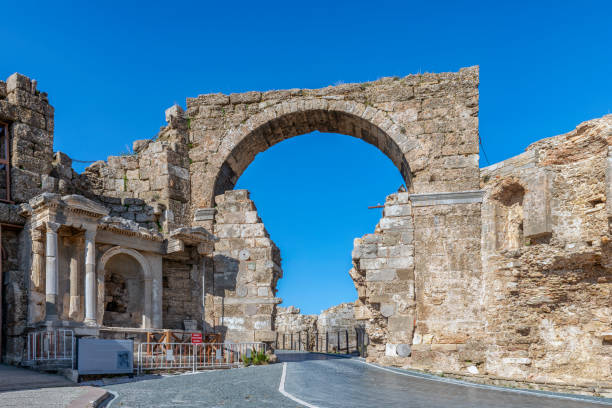
Ruins of the ancient main gate in Side, Turkey
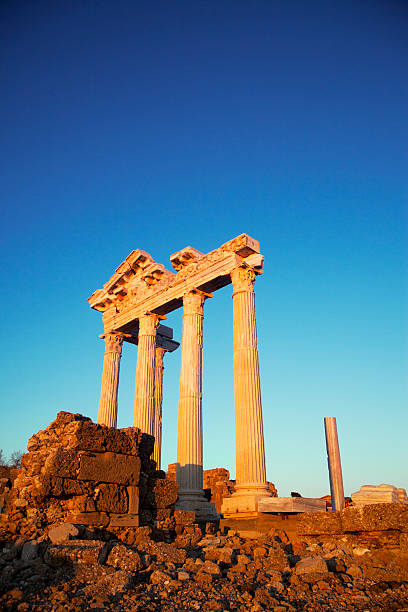
"Temple of Apollo. Side, Antalya / Turkey"

Bath - Gymnasium The Building History The cultural tradition of public bathing originated in the Classical Greek world. in the cities of the Hellenistic kingdoms public baths became standardı catering to the mental and physical well-being of the population. By the middle of the 2nd century BCE, another tradition of public bathing consolidated in Roman İtaly. Bathers visited a sequence of bathing rooms with different temperatures. The Romans also improved the indirect heating technology of floors and walls. One of the public bathing facilities of Sagalassos was situated on a slope or hilltop to the east of the Lower Agora. The original building was constructed during the second quarter of the 1st century CE. It featured three rectangular spaces in a row, which were possibly vaulted and ended on an apsis at the southern end. The original configuration could have featured a courtyard at the other Side. From 120 CE onwards, the remains of the first building were incorporated in a newly conceived, large-scale bath-gymnasium complex, following architectural models typical for Asia Minor. Vaulted spaces were built around the hilltop in order to enlarge the building surface. The bathing rooms were laid out on this terrace, with the heated rooms over a suspended floor. The core of the building was constructed with mortared brick. The outer walls received a monumental Shell of limestone ashlars. The interior decoration was very spectacular with walls and floors cladded with marble in many colours, mosaics and a collection of statuary. As the building suffered from the internal üşe of heat and water, it saw many interventions, with a major renovation in Late Antiquity. In the course of the 6th century CE, however, parts of the majestic bath-gymnasium were abandoned, and the empty rooms were stripped of all re-usable materials. Finally, the damage caused by the 7th century CE earthquake put the facility beyond use.
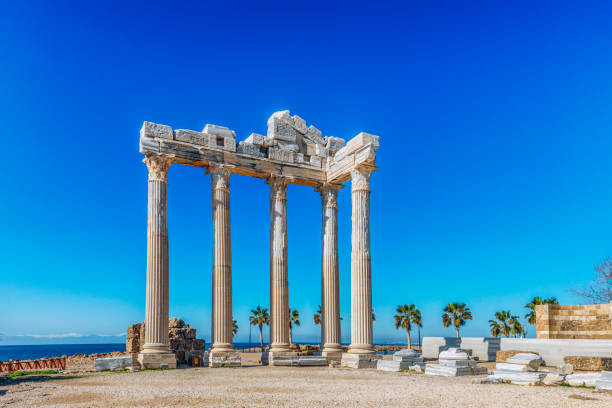
The Temple of Apollo is located at the end of Side's peninsula. Side is a city on the southern Mediterranean coast of Turkey. It includes the modern resort town and the ruins of the ancient city of Side, one of the best-known classical sites in the country.
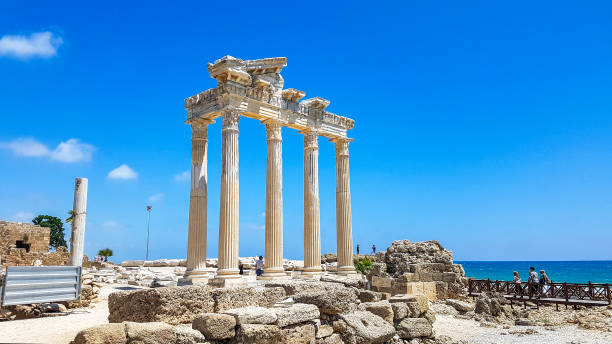
Side, Antalya, TURKEY - June 30 2018: Antalya province of Turkey have also found ruins and people browsing the Apollo temple was built in the period known as the Peace of Rome

Apollon Temple, Side, Antalya, Turkey

Ruins of the Temple of Apollo, Side, Antalya Province, Turkey. High quality photo